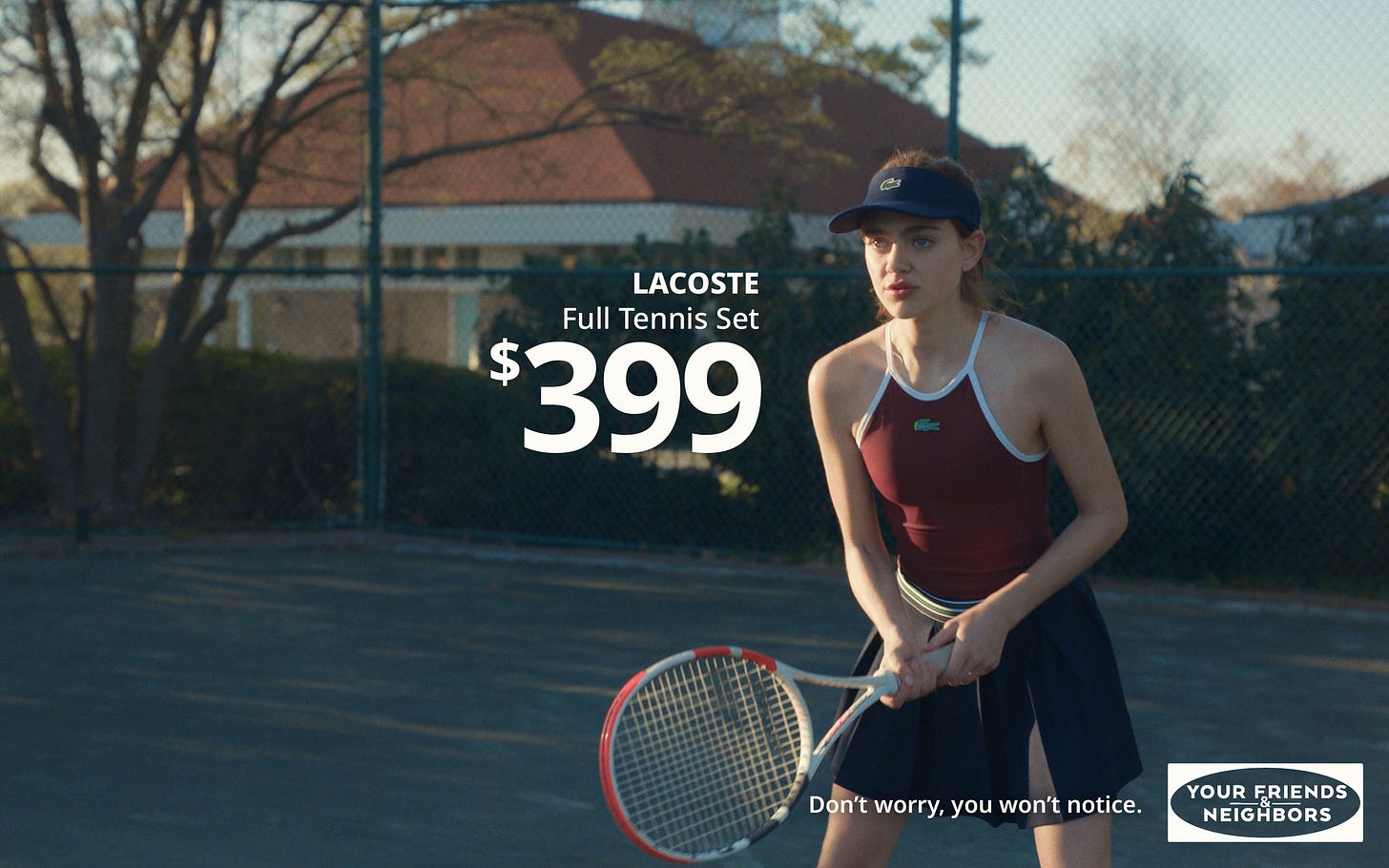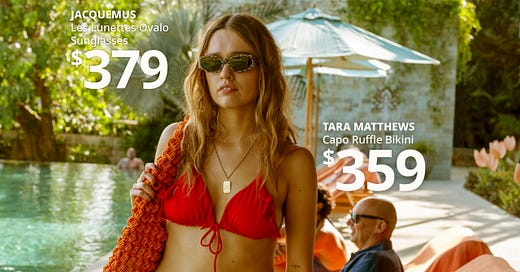Your Favorite Show Is a Fashion Ad
In Product Placement 2.0, brands don't just sit in the background. They shape the story.
This article is part of Dot Dot Dot’s bi-monthly ‘Pulse Check’ series that provides real-time industry analysis by connecting the dots between trends, brands, and wider cultural movements.
In the new Apple TV series Your Friends & Neighbors, successful hedge fund manager Andrew "Coop" Cooper (played by Jon Hamm) suddenly finds himself divorced and jobless. He starts robbing his wealthy neighbors to stay afloat. Stealing from his own social circle strangely exhilarates him, but he gradually gets tangled in a deadly web.
It starts with Coop wandering around in the house of one of his “friends” when he sees the neighbor's watch collection. Returning that night, he makes his first move, stealing a white gold Patek Philippe Nautilus with a sunburst dial. The visual direction of the show all of a sudden changes in a cut screen.

Like an ad, the Patek comes into screen rotating, showing in writing all its intricate details that make it worth upwards of its $100,000 price tag. The actual watch ad is shown next, its slogan mentioned by Hamm in an Anthony Bourdain-esque voice over. The interlude is over, and we return to the plot.
That same style is continued throughout when mentioning Richard Mille, a Jackson Pollock painting, and a bottle of Grand Cru Domaine d'Auvenay Chevalier-Montrachet worth $32,000. All become plot points in the story, all are highlighted, all are... product placement done simply better and more entertaining?
Product placement has always been a little sleight of hand. That perfectly placed soda can in a sitcom kitchen? That was never accidental. The luxury car in a chase scene? Paid for. And in the early 2000s, we all became aware of it. The spell was broken. Viewers rolled their eyes, called it out, memeified it. The cool factor evaporated.
But something has changed. Product placement is back, and this time it’s smarter, deeper, and more stylish. It's no longer just about visibility. It's about character, culture, and narrative integration.

Welcome to Product Placement 2.0: where the product isn’t just in the scene, increasingly so it is the scene. And in many of today’s most talked-about TV shows and films, luxury and fashion brands are no longer in the background. They’re helping tell the story.
Why Product Placement Worked (And Why It’s Working Again)
From a psychological standpoint, product placement once thrived because it operated under the radar of our conscious resistance. The mere exposure effect, theorized by Robert Zajonc, suggests that we develop preferences for things simply because they’re familiar. This helped explain why a can of Pepsi on the kitchen counter or a character driving a Ford could subtly nudge viewer affinity.
Implicit memory (the ability to recall a brand without being explicitly aware of having seen it) further explains the power of these integrations. You didn’t remember seeing Reese’s Pieces in E.T., but you reached for them in the candy aisle all the same. Our brains reward familiarity. And when characters we like use those products, the halo effect and parasocial relationships kick in. If James Bond wears Omega, we want to too. Not because of the ad, but because he did.
Fast forward to today. After a cynical backlash to clumsy placements, something surprising happened: it started working again, but differently. Today, audiences are not just more tolerant of product placement, they’re actively looking for clues.

In a culture obsessed with lifestyle, aesthetic, and brand curation, viewers want to know: What brand is that sweater? What bag is she carrying? What candle is burning in that hotel scene? We’re no longer watching just to be entertained. We’re watching for shopping cues.
As fashion becomes increasingly mainstream and democratized (accelerated by TikTok, resale platforms, and global access) luxury and niche brands alike have become cultural identifiers. Viewers aren’t just decoding plotlines; they’re building Pinterest boards. They want the starter pack to a character’s lifestyle, the visual roadmap to becoming that persona.
Think Carrie Bradshaw’s Upper East Side quirk-meets-couture wardrobe, Kendall Roy’s muted, old-money quiet luxury in Succession, or Rue’s vintage streetwear chaos in Euphoria. They’re style blueprints for viewers to emulate, pin, and purchase.
This is also the era of the self-curated identity. People aren’t just fans, they’re consumers, moodboarders, replicators. What a character wears, drinks, or drives has become more than product placement, it’s now cultural shorthand for who they are. And who we might want to be.





